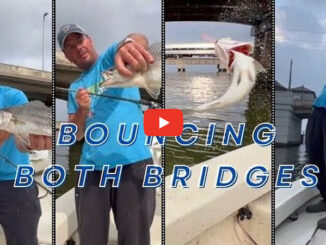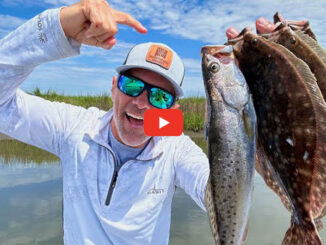Tim Bye, a renowned sac-a-lait fisherman from Folsom, has learned over the years the nature of possibly the most-delectable fish on the planet in the marshes and bayous in and around his former home south of the lake in the Des Allemands, Bayou Gauche and Bayou Black areas. Over the past couple of years, like a lot of sac-a-lait fishermen, he was lured to the bigger specimens that can be found on Toledo Bend Reservoir.
On Toledo Bend, everything changes. On Toledo Bend, they call ’em crappie. On Toledo Bend, everything you thought you knew about crappie fishing goes over the side of the boat and you start over. On Toledo Bend, you have to learn how to use your electronics if you’re to be consistently successful. On Toledo Bend, Bye learned how to use his electronics, and he brought the techniques learned back home with him. And boy, oh boy, he has been very successful, very consistently.
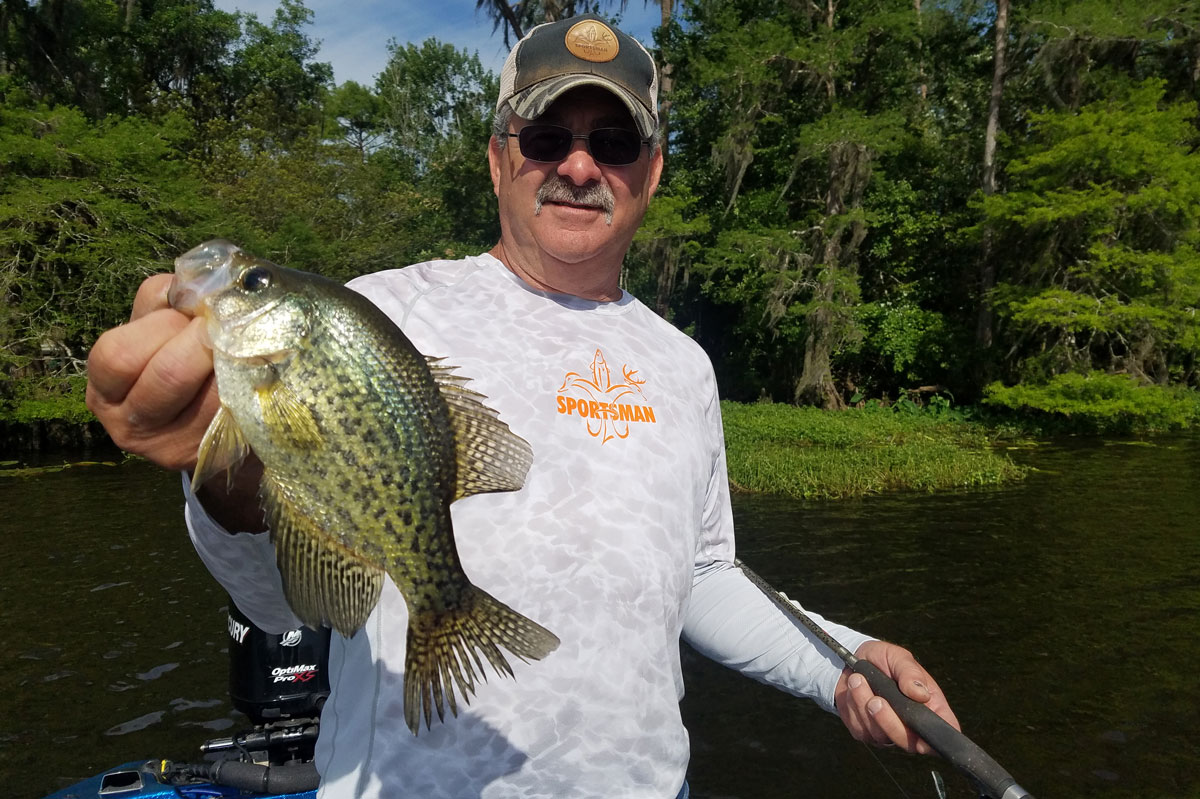 Recently, he was on the Tchefuncte River to demonstrate what he had learned.
Recently, he was on the Tchefuncte River to demonstrate what he had learned.
“These electronics are just amazing,” Bye said. “I use the Lowrance side-scan to locate underwater laydowns, and then zero in on the fish with the Garmin Panoptix LiveScope. With the LiveScope you can actually see your bait falling, see the fish move on your bait, and then it’s on.”
A game changer
It’s really a game changer. The side-scan unit clearly shows the laydowns, other structure, balls of bait and the crappie slowly cruising out from the banks. Once a good bunch of fish is located hanging on some type of structure, Bye cuts the outboard, drops the troll motor, slips the LiveScope into the bracket and eases in for the harvest. Usually, he’ll get a few to bite out of each school, and then he rinses and repeats to the next spot. At times, he will give it a half-hour or more before circling back to the original spot, allowing it to cool off so he can catch a few more.
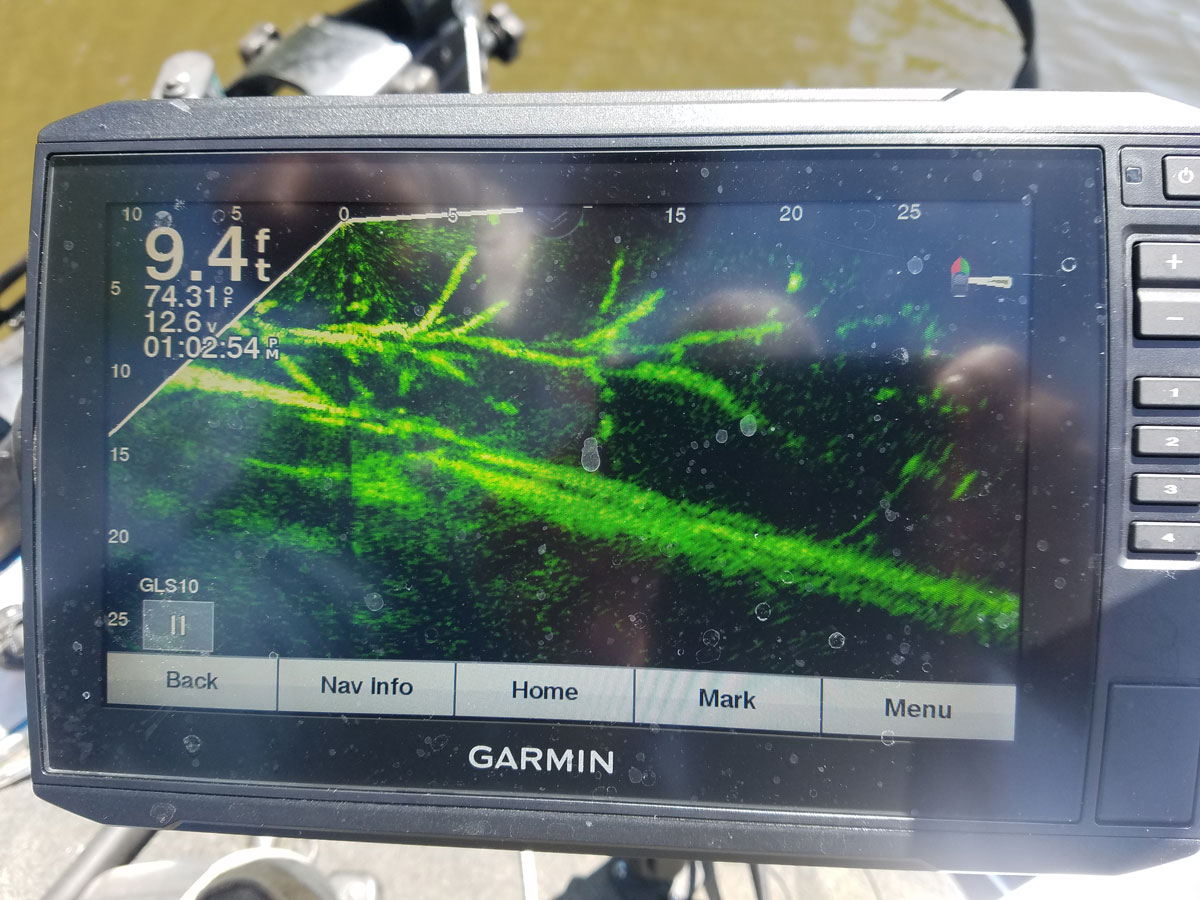
“Once the sac-a-lait have moved off the banks after the spawn, like now in most south Louisiana bayous and rivers, they go to deeper water,” Bye said. “That’s when the majority of fishermen begin to come home with only a few to show for their efforts. This technique can be used on any river or bayou, not just here on the Tchefuncte.”
The pay off
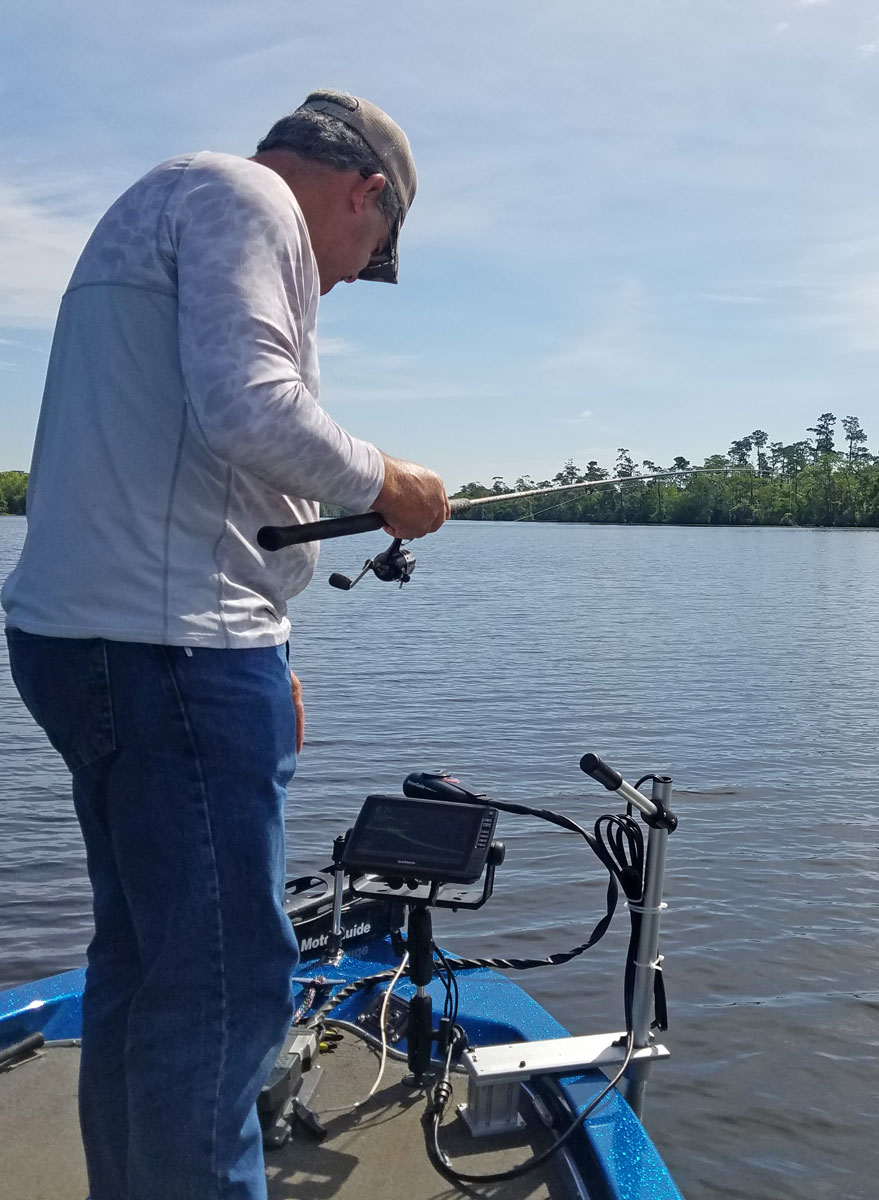
Admittedly, one will have to put aside some dollars to purchase this setup. The Live Scope and all the brackets, etc. will run anywhere from $2,500 on up. Side-scan units start at around $300.
“Most folks might have the electronics, but don’t really know how to use them,” Bye said. “Or maybe they don’t put the time in. It took some effort to get all the settings right, and then to actually know what I was looking at. Every dollar and hour spent learning has really paid off big time. I like to fish, but I really love to catch, too.”
